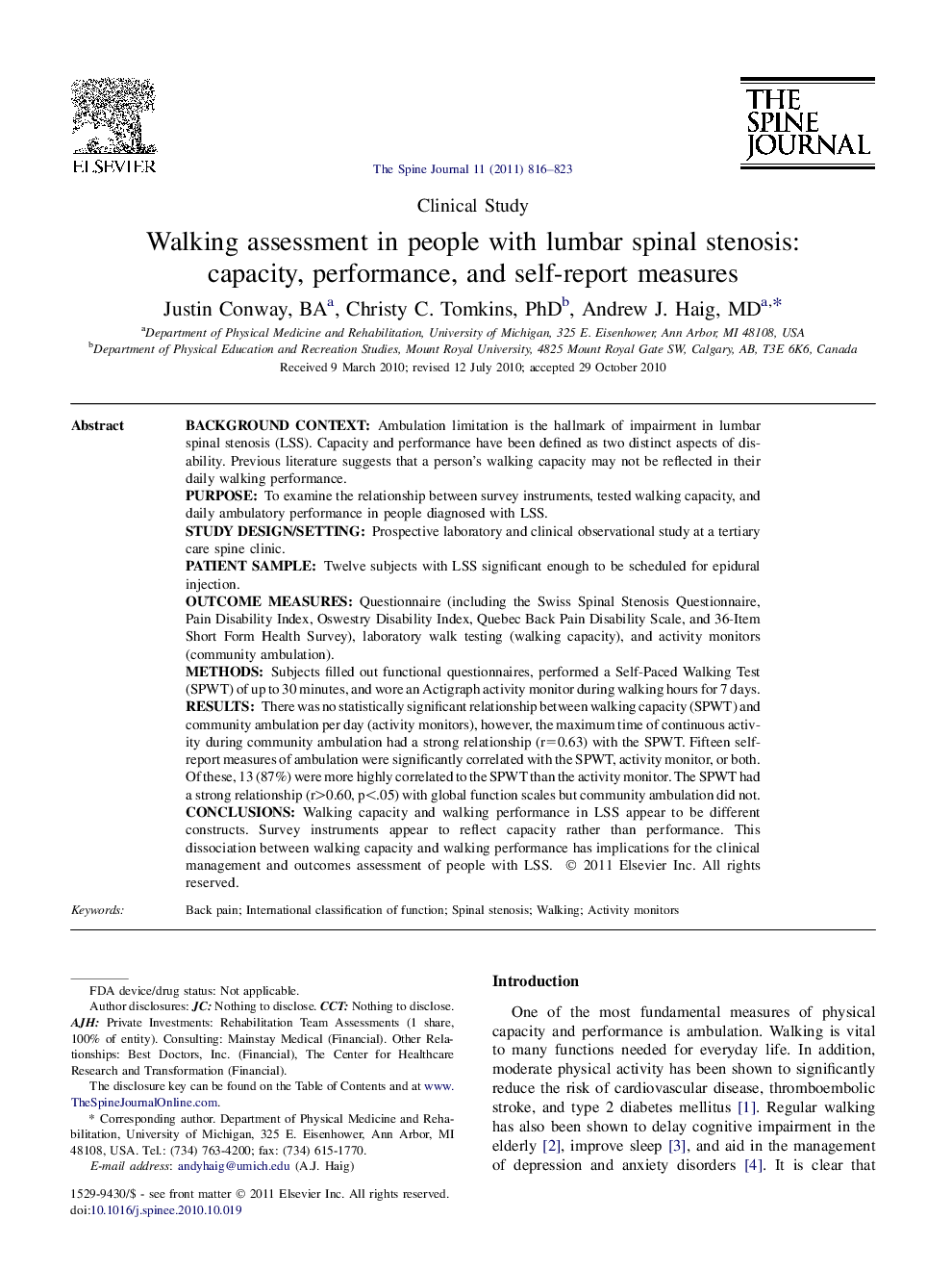| کد مقاله | کد نشریه | سال انتشار | مقاله انگلیسی | نسخه تمام متن |
|---|---|---|---|---|
| 4098930 | 1268627 | 2011 | 8 صفحه PDF | دانلود رایگان |

Background contextAmbulation limitation is the hallmark of impairment in lumbar spinal stenosis (LSS). Capacity and performance have been defined as two distinct aspects of disability. Previous literature suggests that a person's walking capacity may not be reflected in their daily walking performance.PurposeTo examine the relationship between survey instruments, tested walking capacity, and daily ambulatory performance in people diagnosed with LSS.Study design/settingProspective laboratory and clinical observational study at a tertiary care spine clinic.Patient sampleTwelve subjects with LSS significant enough to be scheduled for epidural injection.Outcome measuresQuestionnaire (including the Swiss Spinal Stenosis Questionnaire, Pain Disability Index, Oswestry Disability Index, Quebec Back Pain Disability Scale, and 36-Item Short Form Health Survey), laboratory walk testing (walking capacity), and activity monitors (community ambulation).MethodsSubjects filled out functional questionnaires, performed a Self-Paced Walking Test (SPWT) of up to 30 minutes, and wore an Actigraph activity monitor during walking hours for 7 days.ResultsThere was no statistically significant relationship between walking capacity (SPWT) and community ambulation per day (activity monitors), however, the maximum time of continuous activity during community ambulation had a strong relationship (r=0.63) with the SPWT. Fifteen self-report measures of ambulation were significantly correlated with the SPWT, activity monitor, or both. Of these, 13 (87%) were more highly correlated to the SPWT than the activity monitor. The SPWT had a strong relationship (r>0.60, p<.05) with global function scales but community ambulation did not.ConclusionsWalking capacity and walking performance in LSS appear to be different constructs. Survey instruments appear to reflect capacity rather than performance. This dissociation between walking capacity and walking performance has implications for the clinical management and outcomes assessment of people with LSS.
Journal: The Spine Journal - Volume 11, Issue 9, September 2011, Pages 816–823